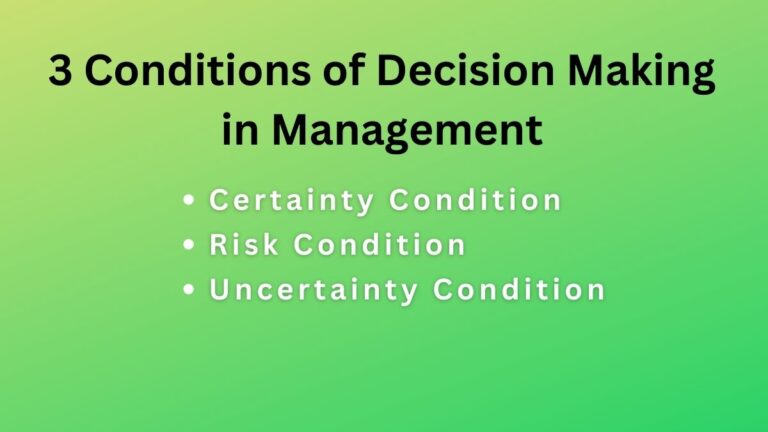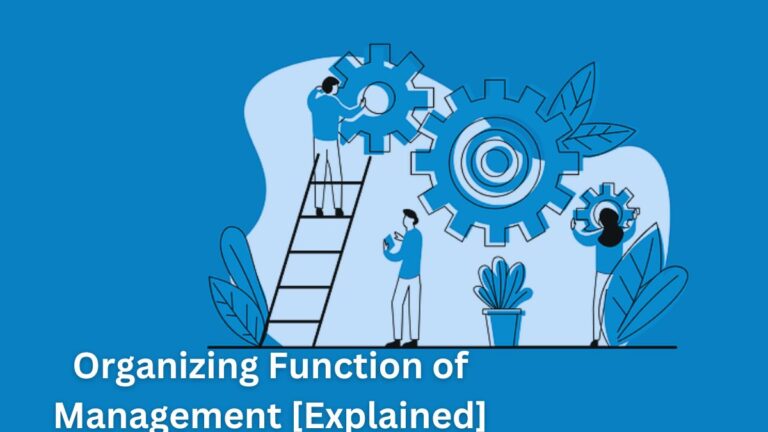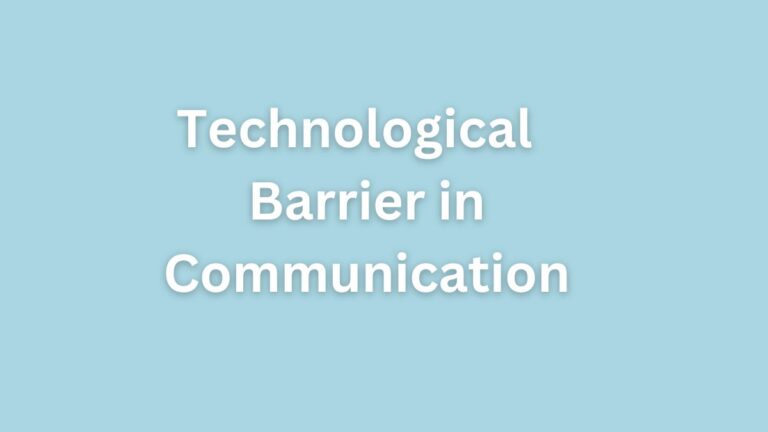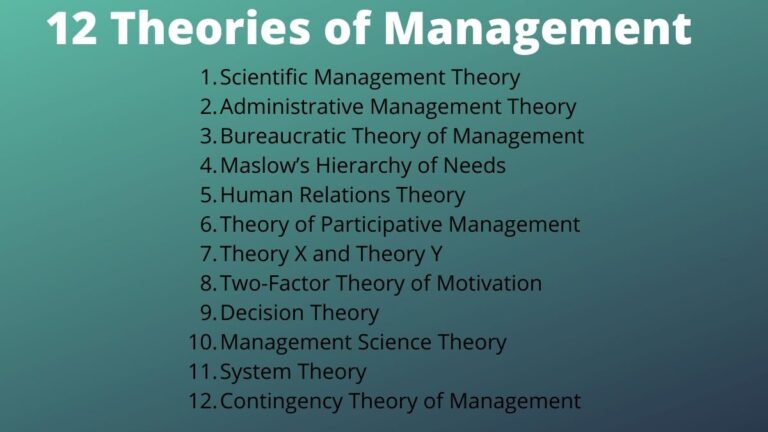Features of Organizational Behavior
What are the features of organizational behavior?
Organizational behavior is the study of individuals’ thoughts, emotions, and actions within an organization and its surrounding environment.
Organizational behavior is a comprehensive field that explores the thoughts, emotions, and actions of individuals and groups about an organization. By understanding these dynamics, organizations can enhance employee well-being, promote effective leadership, and create a positive and productive work environment.
10 Features of Organizational Behavior: Defining
The following are the features of organizational behavior:
Management Concept
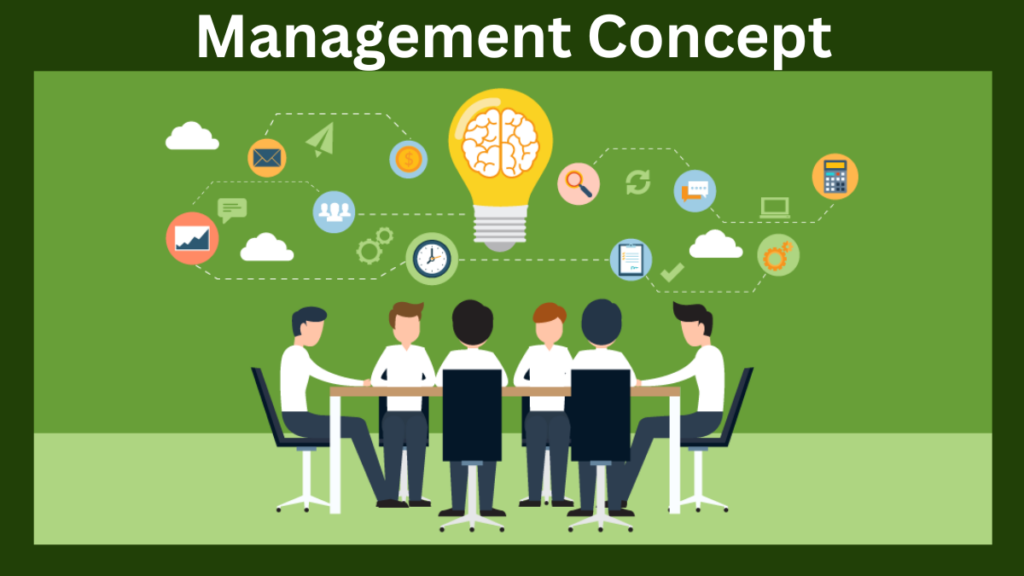
Management is the process of planning and coordinating various talents and resources within an organization, uniting them towards a common objective and guiding their efforts toward success. It needs a delicate equilibrium between maximizing efficiency and achieving effectiveness.
The managers inspire teamwork and collaboration among employees, leveraging their diverse skills to achieve organizational goals. Effective management involves the optimization of processes, refining them to ensure smooth operations and streamlined productivity.
By identifying strengths and weaknesses, managers allocate resources strategically, ensuring that each team member performs in sync, contributing their unique talents and expertise to achieve collective success.
Future-oriented
Future-oriented attribute reflects an organization’s ability to anticipate and adapt to upcoming challenges and changes in the business environment. By cultivating a forward-thinking mindset, organizations can stay ahead of the competition and effectively respond to emerging trends, technologies, and market dynamics.
It implies conducting thorough environmental scanning to identify potential opportunities and threats. This includes monitoring industry trends, technological advancements, and socio-economic shifts that may impact the organization.
The future-oriented organization encourages innovation and embraces change. It develops a culture of continuous learning and improvement, where employees are encouraged to generate new ideas and adapt to evolving circumstances.
Goal Oriented
Goal-oriented encompasses the focus and drive toward achieving desired outcomes. It refers to individuals’ and groups’ ability to set specific objectives and work systematically to accomplish them.
It necessitates clear goal identification, where individuals and teams establish well-defined and measurable targets that align with the overall organizational mission. This includes setting both short-term and long-term objectives that are specific, achievable, relevant, and time-bound.
Goal-oriented behavior includes effective resource allocation and utilization. It requires individuals and teams to allocate their time, effort, and resources in a manner that maximizes productivity and minimizes waste. This may involve prioritizing tasks, delegating responsibilities, and adapting strategies as needed to ensure efficient progress toward the intended goals.
Multidisciplinary
Multidisciplinary emphasize the integration of diverse academic disciplines to understand and analyze human behavior within an organizational context. It incorporates insights from psychology, sociology, anthropology, management, economics, and other related fields.
By adopting a multidisciplinary approach, organizational behavior seeks to explore the complex dynamics that shape individual and group behavior, decision-making processes, leadership styles, motivation, and organizational culture. This perspective recognizes that organizations are complex systems influenced by a variety of factors, both internal and external.
Multidisciplinary research provides a comprehensive lens to examine organizational phenomena, enabling researchers and practitioners to develop effective strategies for managing change, enhancing employee well-being, and improving overall organizational performance.
Multiple Levels
Multiple levels encompass the various dimensions and layers within an organization. This concept highlights the complex interplay between individuals, groups, and the larger organizational structure.
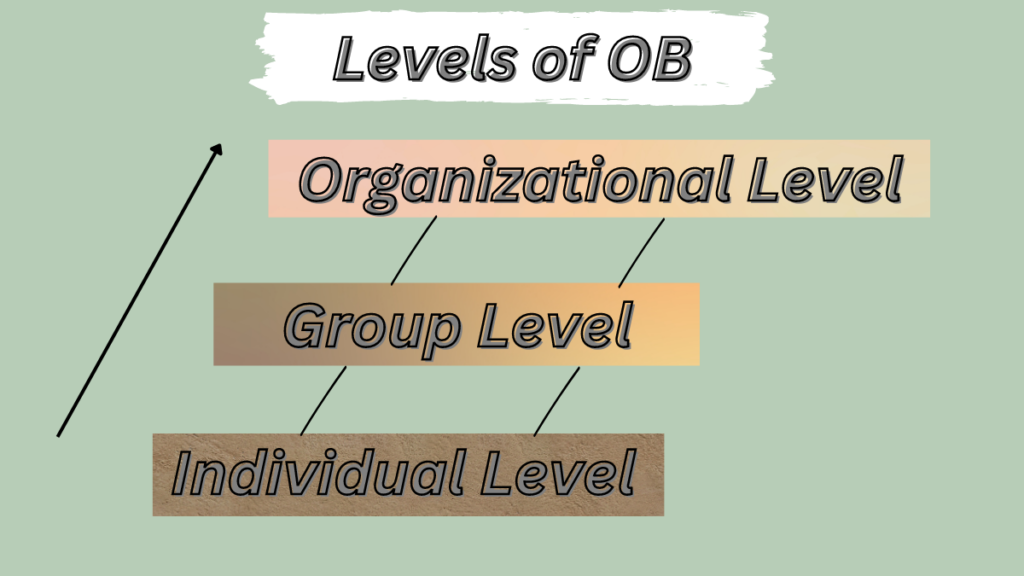
At the individual level, organizational behavior explores the psychological aspects that influence employee attitudes, motivation, and decision-making. It studies the topics such as personality traits, perception, and learning processes, which shape an individual’s behavior within the organization.
Moving to the group level, organizational behavior examines how individuals come together to form teams and work towards common goals. Factors like group dynamics, leadership styles, communication patterns, and conflict resolution strategies play crucial roles in determining group cohesion, productivity, and effectiveness.
Lastly, at the organizational level, the focus expands to the organization’s overall structure, culture, and systems. This includes analyzing formal and informal networks, power dynamics, organizational climate, and the impact of organizational policies on employee behavior.
Systematic Study
The systematic study focuses on the scientific investigation of human behavior within an organizational context. It calls for an analytical approach that seeks to understand, explain, and predict the actions, attitudes, and interactions of individuals and groups in a workplace setting.
Through a systematic study, organizational behavior researchers generate knowledge that helps organizations enhance productivity, employee satisfaction, teamwork, leadership effectiveness, and overall organizational effectiveness.
The systematic study of organizational behavior enables decision-makers to make informed choices and develop strategies based on rigorous scientific findings. This ensures objectivity and reliability in understanding and managing the complexities of human behavior within organizations.
Situational
Situational refers to the understanding that the behavior of individuals and groups within an organization is heavily influenced by the specific circumstances or situations they find themselves in. This feature recognizes that different situations can bring out varying responses and that individuals may adapt their behavior based on the context they are in.
Situational factors can include the organization’s culture, its structure, the nature of tasks or projects, the level of autonomy given to employees, and the overall work environment.
By recognizing the impact of these situational factors, managers can better understand and predict the behavior of individuals and groups within the organization.
Continuous Process
Continuous process refers to the ongoing nature of studying, understanding, and managing human behavior within an organizational setting. This feature highlights that organizational behavior is not a one-time event, but rather a perpetual cycle of observation, analysis, and adaptation.
Organizational behavior recognizes that people’s attitudes, perceptions, and actions are constantly evolving, influenced by various factors such as culture, leadership, and the external environment.
Consequently, organizations need to consistently monitor and respond to these changes to create a conducive work environment and achieve organizational goals.
Organizational Structure
The organizational structure is a fundamental aspect of organizational behavior, encompassing the arrangement of roles, responsibilities, and relationships within a company. It establishes the framework that defines how various tasks, decisions, and communications flow across different levels and departments.
It can take various forms, such as functional, divisional, matrix, or network-based. The functional structure groups employees based on their shared expertise or skills, allowing for specialization and clear reporting lines.
The chosen organizational structure influences communication patterns, decision-making processes, and the distribution of power and authority. It can impact employee motivation, job satisfaction, and overall organizational culture. Therefore, understanding and carefully designing the organizational structure is crucial for effective management and successful organizational behavior.
Workforce Diversity
Workforce diversity is the inclusion and integration of individuals from various backgrounds, cultures, and perspectives within a workplace setting. This embraces differences in race, ethnicity, gender, age, sexual orientation, religious beliefs, educational background, and more.
Diverse perspectives develop creativity and innovation, as individuals with unique experiences offer fresh insights and alternative problem-solving approaches. It also enhances decision-making processes by incorporating a wide range of viewpoints and reducing the risk of groupthink.
Furthermore, work diversity cultivates a culture of inclusion, which promotes employee engagement, morale, and productivity. It develops the feeling of mutual respect, empathy, and understanding among colleagues, leading to stronger collaboration and teamwork.

